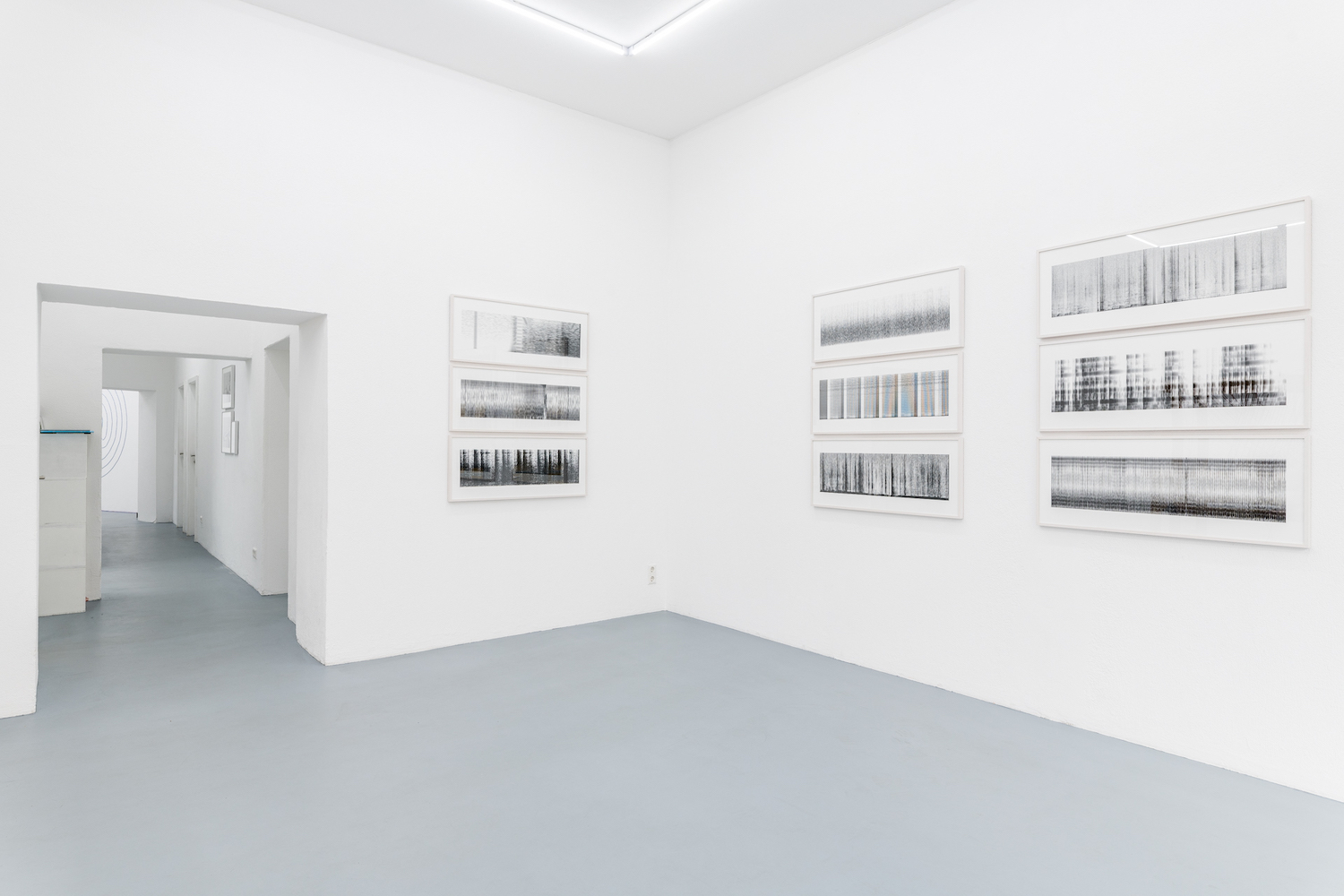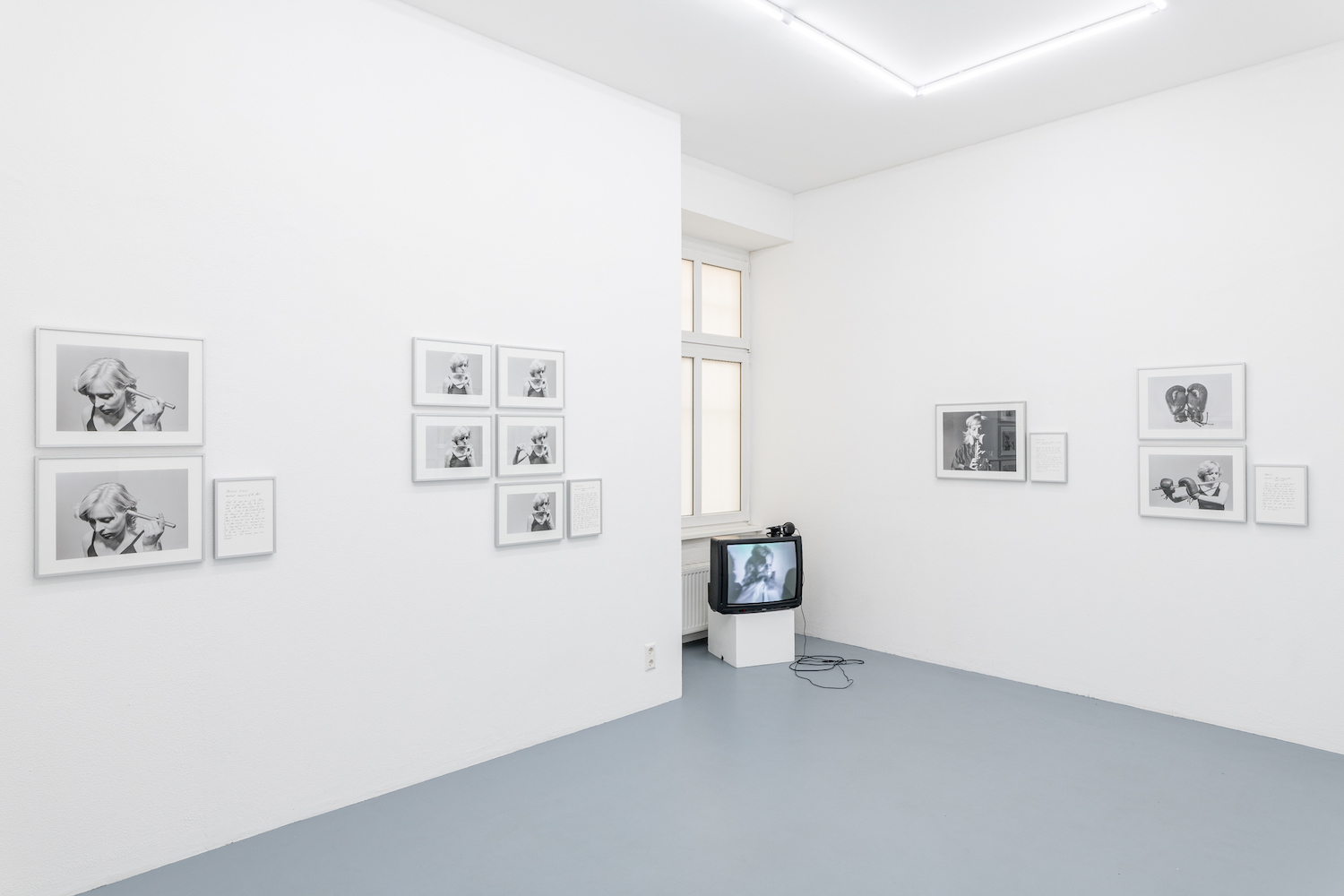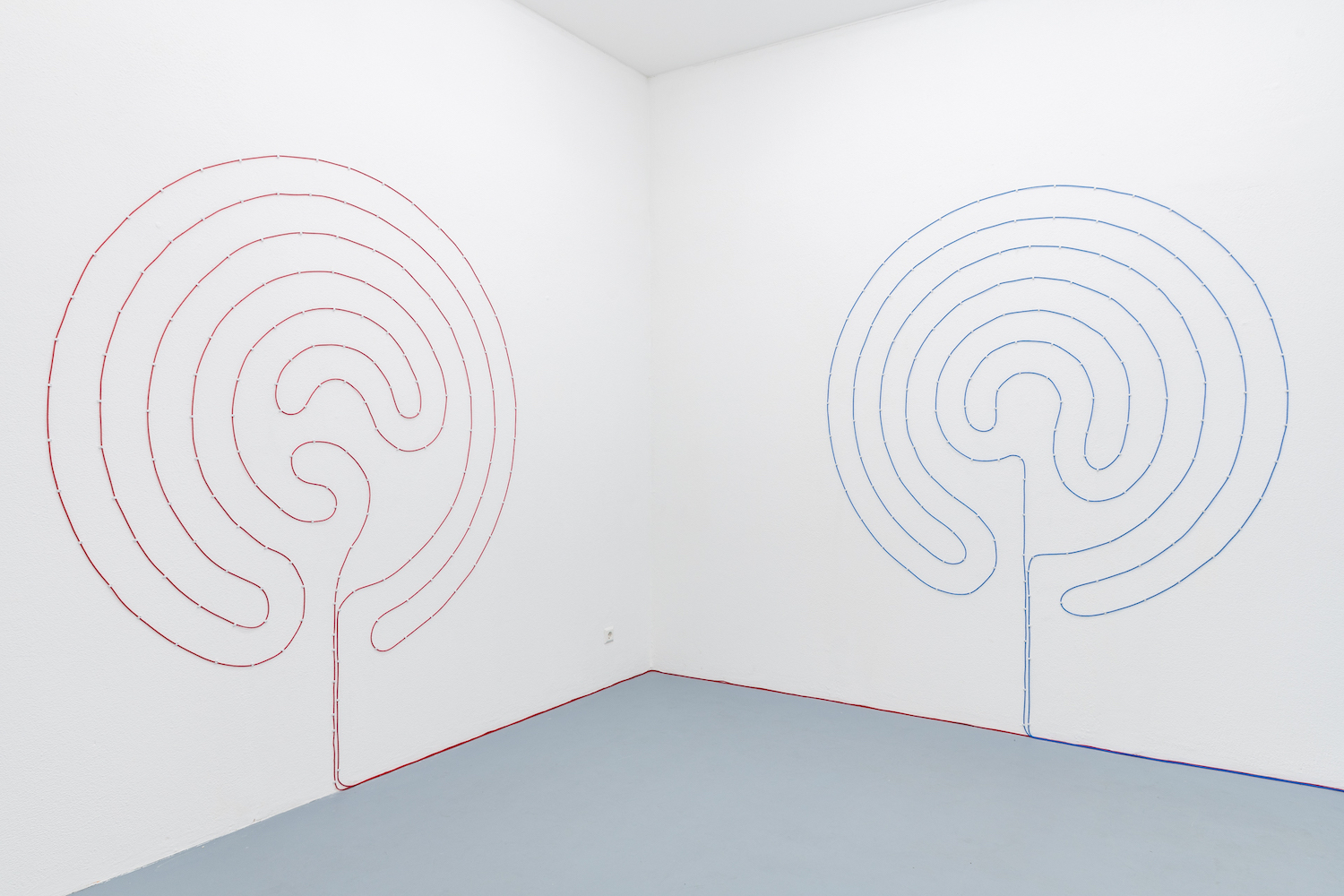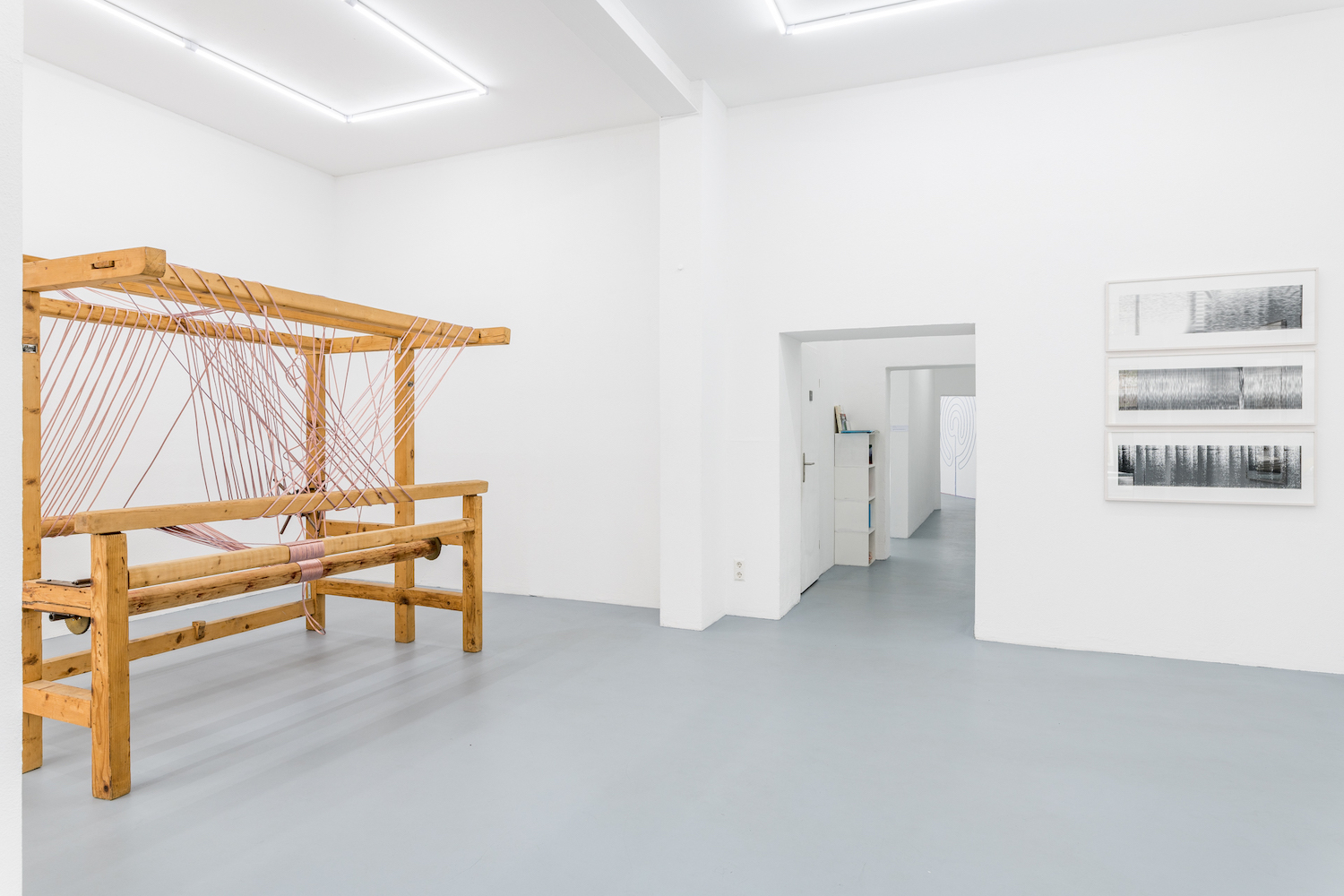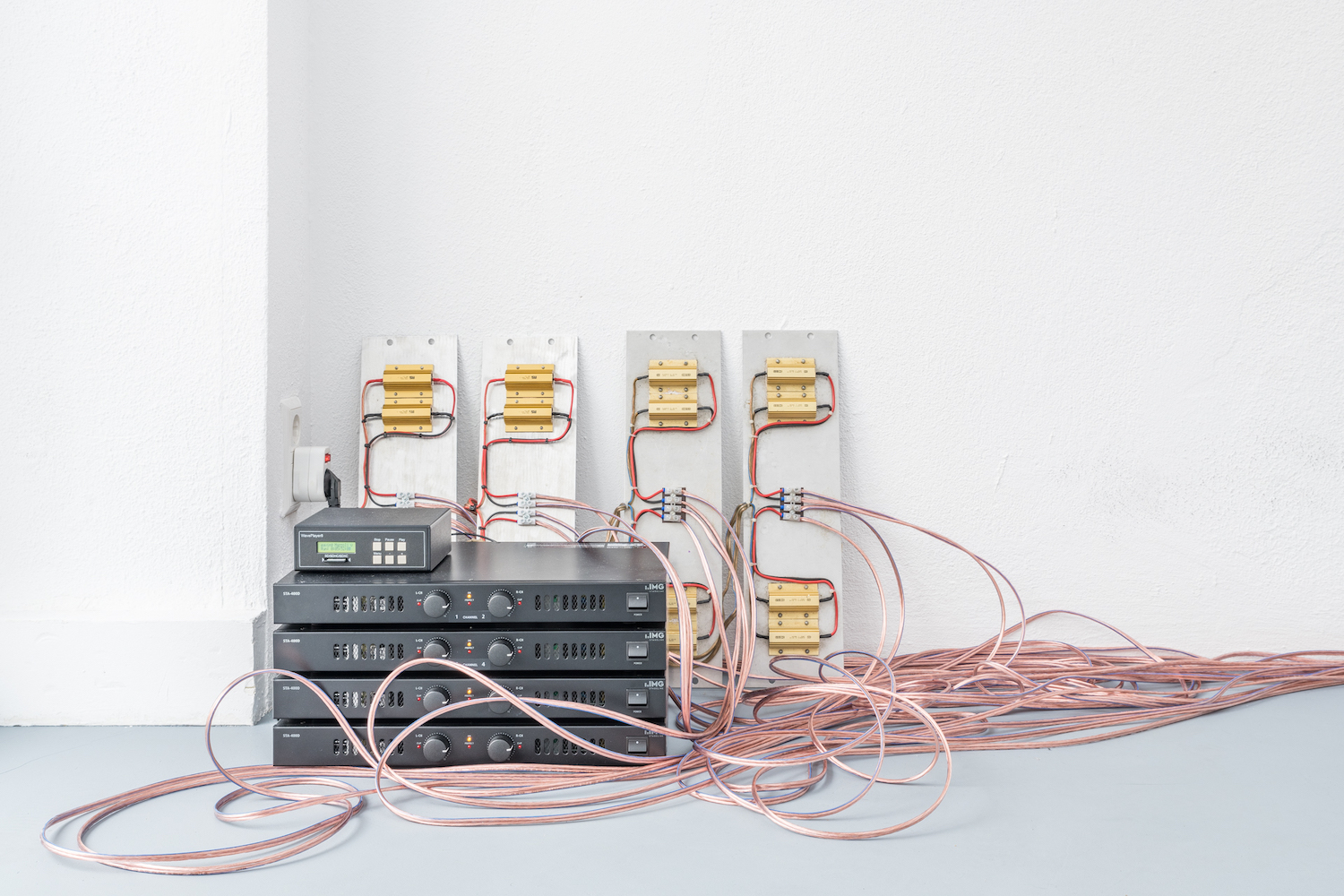For the first time, the artist will present in a gallery a short journey through her entire pioneering research as a sound artist. The exhibition begins with a presentation of the installation Il respiro del mare (it. Breath of the Sea) from 1981 along with a selection of drawings and documents from a few of the artist’s most significant works from the 1980’s and 1990’s, in particular concerning the Electrical Walks series. In the middle room the series Emergency Solos of 1975 combining photos, instruction texts and video gives an overview of the different performances. Finally, the journey concludes and frames the exhibition content and duratorial wise with the introduction of a new series of prints (Transitionen) and, most notably, the brand new large installation Weaving II. The selection of pieces in Transmission allows the visitor to get a sense about the main trajectories that Christina Kubisch’s sound work has taken over the years, and about how she came to develop a personal vocabulary which defies categorization into a specific artistic current.
With regards to Kubisch‘s sonic arts endeavors, music is most certainly a permanent catalyst. This is less obvious than it may seem: although reflections on the concept of music—on what music was, what was its social impact, and what it meant to make it and perform it—were not uncommon among composers following from the tradition of the likes of John Cage or Pierre Schaeffer, they were indeed unusual, if not unheard of, in the field of visual arts. Kubisch was among the first to pursue the translation of a common compositional attitude into a visual phenomenon.
The installations Il respiro del mare, from 1981, and Weaving II, from 2021, are respectively the oldest and the most recent of Kubisch’s pieces relying on electromagnetic induction and arranged cables. Il respiro del mare consists of two identical shapes—resembling stylized labyrinths—formed by cables attached to the wall. Weaving II consists of an old weaving loom, upon which copper cables have been laid so to substitute for the usual textile fabric. If the visitors ap- proach the installations without the necessary equipment, they are completely silent. Indeed, a particular device—a box in the former case, a pair of headphones in the latter, most recent work—fitted with a small speaker and other electronic equipment, is necessary to decode the electromagnetic waves traveling through the cable, so that they can be transformed into audible sound. By moving the devices close to the cables, the visitor can hear the sounds that are “hidden” inside them, coming from the devices themselves. The closer the devices are to the cable, the louder the sounds. As the visitor moves around the room and around the installations, he/she moves through different sounds and different combinations.
In Kubisch’s installations the concept of music also plays an important role. Because of the necessity of handheld devices for sound productions, and because of the visitor’s ability to modify the sound by way of moving around the boxes/headphones, the installation becomes, de facto, a musical instrument. A peculiar one, however, because the per- former-visitor cannot change the electronic composition within the cable, but only its loudness, or the way the different sounds coming from the shapes, and therefore from the boxes, are mixed.
Differently from her 1970’s performances, then, Kubisch regains control of the compositional aspect. Like a traditional composer she makes the music she wants us to hear. Unlike a traditional composer, however, she allows us to control how we hear it. In this way she makes us specifically aware that as listeners we can always be active despite what we may think, and that the possibility for a musician to control exactly what the audience is going to hear is a mere illusion. Indeed, if we move around any sort of musical utterance, if we get closer or farther from the instrument playing, we actively change the way the sound reaches our ears. With this awareness we realize that Kubisch is not concerned to show us that any sound can be music, but that any sound depends on the listener‘s behavior in order to become music.
Emergency Solos, for example, one of her first and most characteristic performance series, cannot simply be he- ard, but requires to be seen in order to be understood. The series seems to arise from the necessity to expose the tension between a musician and his/her instrument, particularly in the challenging context of a performance. This is almost too clearly epitomized—not without a good deal of irony—by the performance Break, in which Kubisch appears performing the flute with her hands covered by boxing gloves. In Weekend, as a further example, the performance instructions requi- re the flute to be played “wrongly”—i.e., blowing into the instrument’s body, as opposed to its mouthpiece—through a gas mask. The instructions continue requiring the performer to play his/herself to exhaustion, symbolizing the musician’s necessity to keep playing at all costs, even in extreme conditions.
The basic tenets of Kubisch’s art—the translation of hidden phenomena into perceptible ones, the intercommu- nication between different techniques and processes, the interchange between the artist and the public, the focus on mu- sic as language and as social phenomenon, the broadcasting of electromagnetic waves—are all summarized by the title of the exhibition. The word “Transmission” itself incorporates several meanings and entails different possibilities of inter- pretation. Through Transmission it is possible to enter the world of Christina Kubisch, follow the evolution of her work and career, and grasp the importance of her research in the ever-growing field of interdisciplinary arts. Kubisch creates music to be seen and art to be heard. Indeed, Christina Kubisch’s work contributed to the beginning of an interdiscipli- nary attitude towards sound-based art making that paved the wave for generations of artists to follow, and represents an essential part of the history of what we now call “sound art.”

